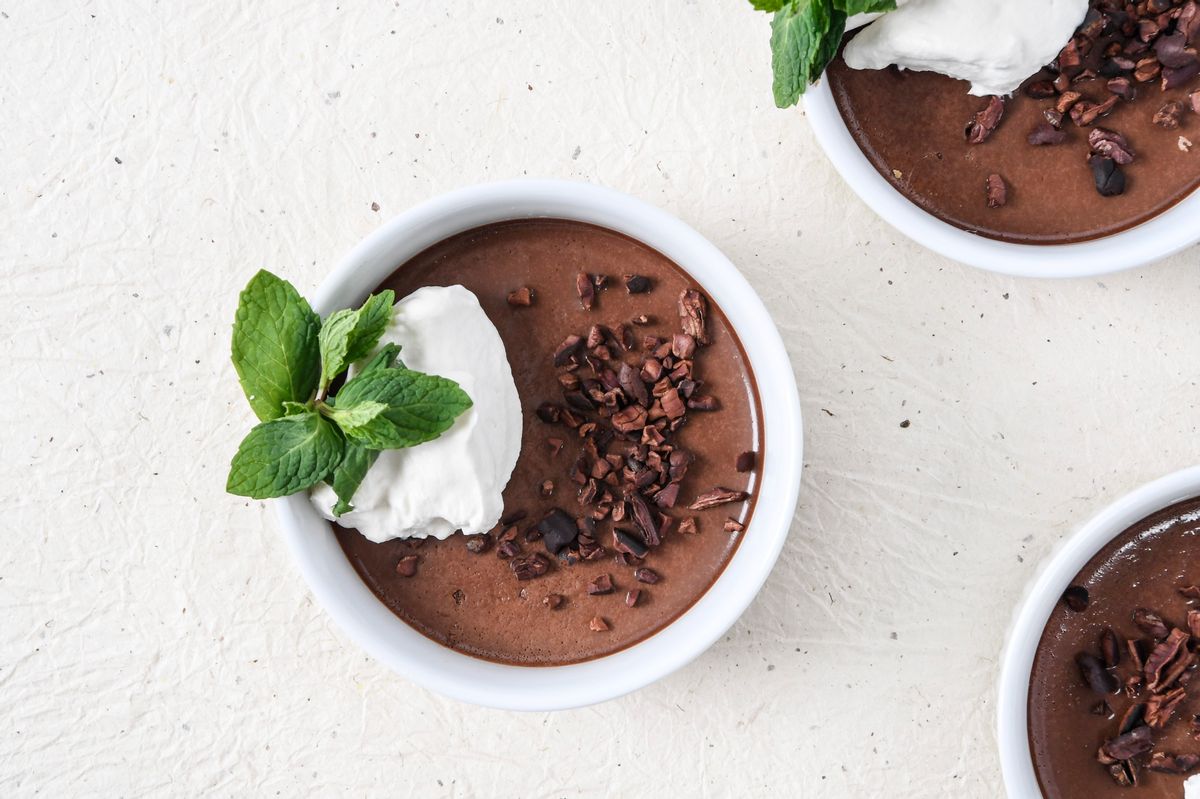A magical maple-mint pudding with a secret Irish ingredient

A few weekends ago, I was out to dinner with a friend who informed me that she was going to Ireland for a few weeks and would be there for St. Patrick’s Day. “How fun!” I replied, which led to chatter about Irish food and drink. With lush greenery that invokes the country’s moniker as the Emerald Isle, Ireland is a gem, complete with a robust cuisine and beverage landscape as rich as its verdant countryside.
While certain classics like Irish soda bread, Irish butter or the litany of Irish potato dishes (boxty, colcannon, farl) are some of my favorites, I’ve become really fascinated by Irish sea moss pudding, which is an approximation of the different kinds of pudding-like dishes across many cultures. However, there’s one particular difference: It once featured literal sea moss as the primary thickening component.
The thickening agent in this instance is carrageenan. A common additive in many food products, it’s used as a thickener, stabilizer and emulsifier in a host of various products, both edible and not, from plant-based milk and ice cream to toothpaste and medications. Here, the naturally released carrageenan helps to make the pudding rich and thick while remaining quite neutral in flavor.
Wildly different from the nori in your sushi or the kelp currently floating among the flotsam and jetsam of the Jersey shore, this Irish sea moss (really a type of seaweed) is a very different product altogether. Carrageenan is derived from a dark red-toned, thin, almost wiry seaweed, which is quite different from the dark green, almost mossy seaweed you may have in mind.
As poetically described by Chris Baraniuk for Hakai Magazine, “. . . the seaweed unfurls instantly when touched by water, taking on its customary glossy red color and silky texture. It has a whiff of the sea at this stage, slightly astringent and with some ocean griminess to boot.” Furthermore, it has “a hint of iodine, more medicinal than marine.”
For those who don’t opt to make pudding, the simple mixture of carrageenan or Irish sea moss and water creates a gel of sorts, which can then be used for many purposes, from medicinal to aesthetic. On the flip side, utilizing the thickening agent in a culinary capacity allows it to impart its cool salinity on whatever it’s added to.
Want more great food writing and recipes? Subscribe to Salon Food’s newsletter, The Bite.
Vanessa Rissetto writes for Food Network that “during the Irish potato famine in the 1800s, the Irish would add red seaweed to warmed milk with sugar and nutmeg and drink that when food options were limited.” Then “in the 19th century, carrageenan became a key ingredient in classic Irish pudding.” It was also often used for those who were ill or unable to eat other more abrasive or heavy foods.
As noted by John McKenna in The Irish Times, many Irish chefs’ iterations of the classic pudding are now elevated, including everything from carrageenan panna cotta with port-soaked figs to a lemon-balm version and pudding with cinnamon and ice cream.
If you aren’t near the European coast, making classic, legitimate Irish moss pudding at home might be a bit of a challenge. To enjoy a rich, thick Irish-flavored pudding this St. Patrick’s Day, you can reach for one of many other carrageenan-like thickening agents instead. These include everything from cornstarch and arrowroot to xanthan gum and good ol’ gelatin.
Sláinte!
Irish Sea Moss Maple-Mint Pudding
Yields
6 servings
Prep Time
30 minutes
Cook Time
20 minutes, plus chill time
Ingredients
- 1 palmful Irish sea moss (See Cook’s Notes)
- 1 bunch fresh mint, cleaned
- Water
- 1 1/2 cups whole milk
- 1/2 cup heavy cream
- 1/3 cup granulated sugar
- 1 teaspoon vanilla paste
- 1 teaspoon unsweetened cocoa powder
- 1 pinch salt
- 1 egg, optional
- Maple syrup, for drizzling
- Fresh fruit, for garnish, optional
- Whipped cream, for garnish, optional
Directions
- Steep the sea moss and mint in hot water for at least 30 minutes.
- Strain out the moss and mint, retaining the water.
- In a large pot over medium-low heat, add the carrageenan-mint water, milk and cream. Whisk until homogenous and thickened.
- Add the sugar, vanilla paste, cocoa powder and salt, whisking well. Cook 2 to 3 minutes.
- If using, temper the egg now: In a bowl, crack the egg and whisk in some of the warmed pudding mixture, whisking consistently until slightly thickened. (The point here is to ensure that you’re not nonchalantly throwing an egg into the hot liquid and winding up with chunks of scrambled egg throughout the pudding.)
- Slowly, add this back to the pot, whisking consistently, until the mixture has thickened a bit more.
- Spoon into 6 small glasses or pudding bowls and place in the refrigerator to set for at least 2 hours. (You can also opt for molds or particular panna cotta-like bowls, which you can then unmold for a particular shape.)
- Once firm, serve with maple syrup for drizzling, as well as fresh fruit.
Cook’s Notes
– Depending on where you live, getting your hands on Irish sea moss might not be a simple feat. If you’re unable to source it, opt for any of the aforementioned thickeners instead. Be mindful, however, that the cooking method may change slightly.
– In many instances, carrageenan is such a stable thickener and emulsifier that the egg isn’t needed. As long as it’s tempered well, though, adding one helps with the texture and consistency.
Read more
about St. Patrick’s Day

